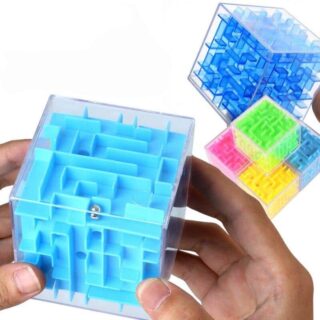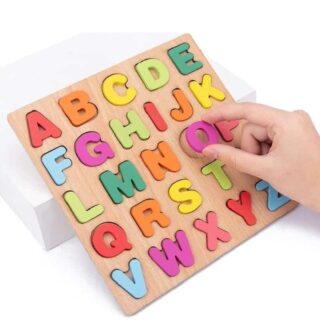-
Children's puzzle, Children's games
16,40 $ Select options This product has multiple variants. The options may be chosen on the product page -
Children's puzzle, Children's games
16,40 $ Select options This product has multiple variants. The options may be chosen on the product page -
Children's puzzle, Children's games
16,40 $ Select options This product has multiple variants. The options may be chosen on the product page -
Children's games, Children's puzzle
16,40 $ Select options This product has multiple variants. The options may be chosen on the product page -
Children's games, Children's puzzle
16,40 $ Select options This product has multiple variants. The options may be chosen on the product page -
Children's puzzle, Children's games
16,40 $ Select options This product has multiple variants. The options may be chosen on the product page -
Children's puzzle, Children's games
16,40 $ Select options This product has multiple variants. The options may be chosen on the product page
Jigsaw puzzles are one of the most popular games for developing children’s faculties. They are renowned for their contribution to the development of intelligence. They help children to concentrate, and are a fun tool to play with. Which puzzle should you give your child? How can you be sure you’re making the right choice? Here are the answers to your questions.
Why choose a children’s puzzle?
These picture-based toysimpact children’s cognitive development. The colors and pieces to be arranged mobilize their attention and work on their motor skills. They improve the coordination of their movements and nurture their patience and perseverance. Puzzles teach children to problem-solve. Finally, it brings joy, as children rejoice when they reach their goal.
When to offer puzzles to your children?
The ideal age varies from child to child. The game is suitable from 18 months.
First, check whether your child can grasp light objects. Then check whether he identifies shapes and colors.
Which puzzle for which age?
Age determines the choice of puzzles. Some are made for toddlers, like this wooden puzzle for babies, while others require an older age, like the Star Wars shipto build yourself.
Children aged 12 months
Babies aged 12 months require round, build-it-yourself puzzles. Prefer a wooden model, a sturdy and healthy material.
As the child masters nesting games, offer other shapes.
Children aged 18 months to 2 years
From 18 months, opt for woodenpuzzles adorned with illustrations.
Between 18 and 24 months, children will also have fun with guided puzzles. The toys feature holes in which the child arranges the objects according to their shape.
Children aged 2 and over
From the age of 2, children’s motor skills are developing. Offer them puzzles with lots of wooden pieces.
Between ages 3 and 6, give preference to puzzles with fewer than 16 pieces.
From ages 6 to 9, children can do all types of puzzles.
Choose according to puzzle theme
For children aged 18 months to 2 years, opt for puzzles with an alphabet or letter theme.
From ages 2 to 4, opt for toys that illustrate wildlife or call for the reconstruction of a place.
For children aged 4 to 6, opt for complex puzzles, such as those illustrating a castle, a car or a cartoon character.
When children are between 6 and 9, offer them instructive puzzles evoking :
- The human body
- The map of a country or the world
- Houses
In addition, puzzles with more than 200 pieces improve the thinking skills of childrenover 6.
How to maintain children’s puzzles
Wooden puzzles require a few swipes with a cloth. If necessary, use a wet sponge to remove dirt.
If the puzzle is dirty, use alcohol and dry with a cloth. Above all, don’t soak wooden puzzles in water. Avoid chemicals.
What about 3D children’s puzzles?
Three-dimensional puzzles are more complex than classic models. This game is suitable for children aged 3 and over.
3D puzzles are made of cardboard or plastic. Cardboard puzzles are easy to assemble and very durable. Plastic models, on the other hand, are sturdy but difficult to assemble.
You’ll find an assortment of puzzles and children’s toys in our online store.
Why are children’s puzzles back in fashion?
Children’s puzzles are a popular activity with parents, and for good reason. Indeed, this activity is not only fun for children, but also has many benefits for their cognitive development and intelligence.
First and foremost, children’s puzzles stimulate their brains, enabling them to develop their problem-solving skills. Indeed, as they try to assemble the various puzzle pieces, children need to demonstrate patience, perseverance and logic to find the solution. This activity helps them develop their spatial reasoning and their ability to visualize shapes and colors.
Children’s puzzles are also good for their memory and concentration.
Indeed, when working on a puzzle, children have to concentrate on each individual piece while keeping in mind the overall picture they’re trying to piece together. This activity enables them to develop their ability to concentrate on a given task for an extended period, which can be very useful in their daily lives.
Children’s puzzles are also a great way of enhancing the quality of family time. Parents can help their children assemble the puzzle pieces, which can encourage dialogue and communication between them. What’s more, this activity can be very relaxing and soothing for children, which can help them unwind after a busy day.











